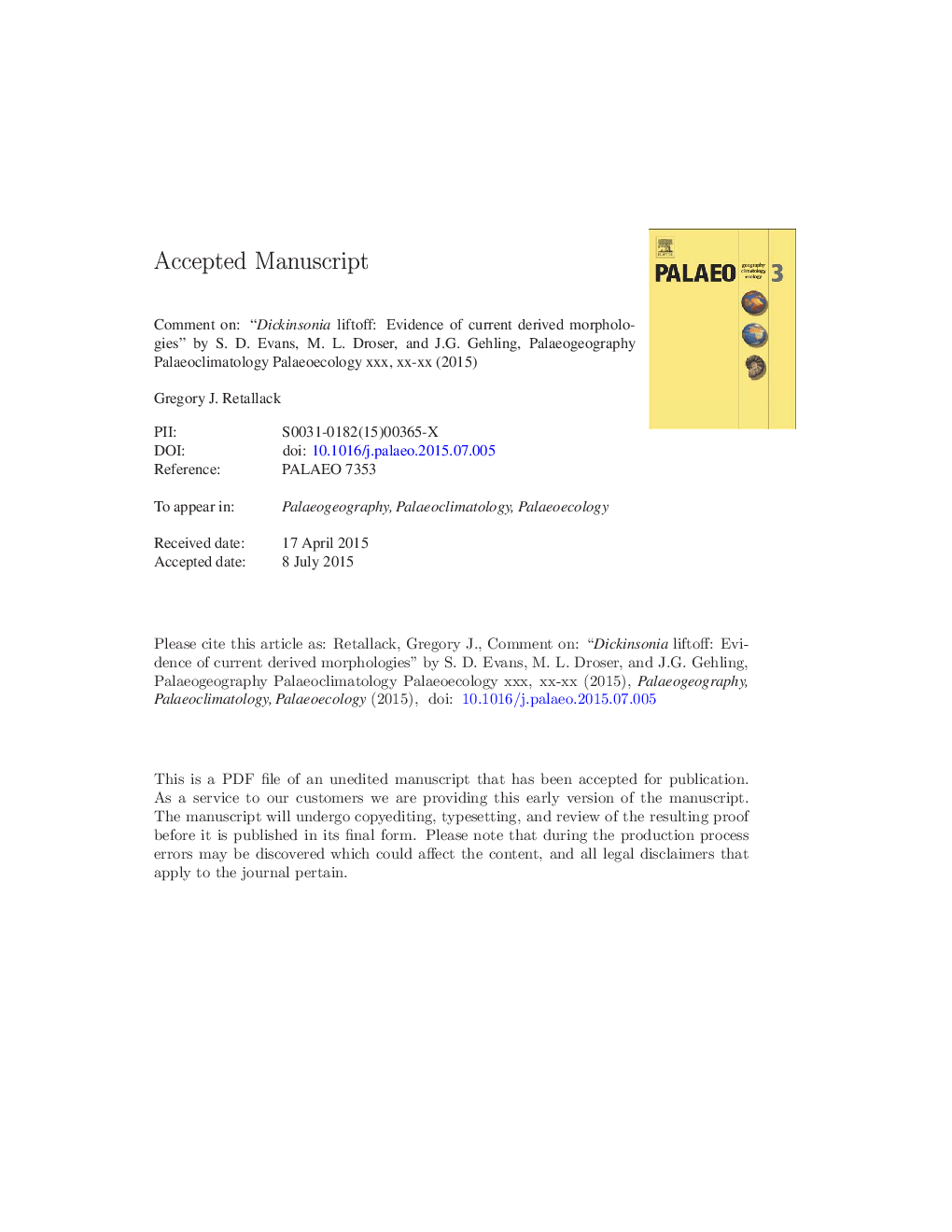| Article ID | Journal | Published Year | Pages | File Type |
|---|---|---|---|---|
| 8868754 | Palaeogeography, Palaeoclimatology, Palaeoecology | 2017 | 9 Pages |
Abstract
Dickinsonia is an enigmatic fossil of Ediacaran age, variously interpreted as a lichen, foraminiferan, placozoan, cnidarian or worm, and now Evans et al. (2015) have provided documentation of new and informative specimens from Nilpena in the Flinders Ranges of South Australia. They consider missing marginal slivers evidence for soft bodied, free living Dickinsonia lifted by current, but such marginal dismemberment of Dickinsonia by currents requires attachment of the rest of the body to the substrate more firmly than body cohesion. Unidirectional orientation of missing pieces of Dickinsonia was considered evidence of shallow marine storms, but such directed currents are found in floods or tsunamis. Finally, curved conchoidal fracture of the missing slivers reveals that the unskeletonized carapace of Dickinsonia was not always soft and flexible, but sometimes hardened, perhaps by desiccation or freezing.
Keywords
Related Topics
Physical Sciences and Engineering
Earth and Planetary Sciences
Earth-Surface Processes
Authors
Gregory J. Retallack,
